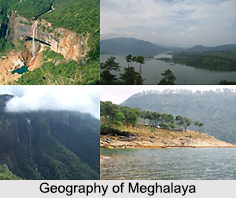 Ramgarh Lake, situated near Jamwa Ramgarh subdivision of the Jaipur district in the Indian state Rajasthan, is an artificial lake and a cherished tourist destination. It lies at a distance of 32 kilometres from Jaipur city and encompasses an area of about 15.5 square kilometres. Once, the lake served as the main source of water supply for the city of Jaipur. Following the rainy season, the lake becomes one of the popular picnic spots. The lake is set amidst a scenic landscape which allures tourists from all around the world.
Ramgarh Lake, situated near Jamwa Ramgarh subdivision of the Jaipur district in the Indian state Rajasthan, is an artificial lake and a cherished tourist destination. It lies at a distance of 32 kilometres from Jaipur city and encompasses an area of about 15.5 square kilometres. Once, the lake served as the main source of water supply for the city of Jaipur. Following the rainy season, the lake becomes one of the popular picnic spots. The lake is set amidst a scenic landscape which allures tourists from all around the world.
Ramgarh was once a hunting ground for the Maharajas of Jaipur. Over the years, Ramgarh has been turned into a heritage place for the kings of Rajasthan. Until year 2000, Ramgarh Lake had been a major source of water for the Pink City of Rajasthan- Jaipur. Ramgarh Lake has a historical record of hosting a rowing event during Asian Games of 1982. The thick forest near Ramgarh Lake is the abode to many wildlife species such as Nilgai, Chital and lions. Hence, the land near Ramgarh Lake has been pronounced a wildlife sanctuary in Jaipur since 1982, by the Government of India.
Attractions of Ramgarh Lake
Ramgarh Lake has been created on a high embankment embraced by hills covered with trees. It measures 2 kilometres in width and 4 kilometres in length.
 It is enclosed with dense forests and the surrounding regions serve as the refuge of a vast array of wildlife. Animals such as Nilgai, Chital and Lion and many more can be spotted here. The region was notified as a wildlife sanctuary in the year 1982 by the Government of India. The rowing events of the 1982 Asian Games were organized in the Ramgarh Lake. The provision of boating in the lake makes it an enjoyable picnic spot. Relics of an old fort and the temple of Jambwa Mata are situated nearby which serves as added tourist attractions. These relics suggest that the place was previously governed by the Kachhawahas before they moved to Ajmer.
It is enclosed with dense forests and the surrounding regions serve as the refuge of a vast array of wildlife. Animals such as Nilgai, Chital and Lion and many more can be spotted here. The region was notified as a wildlife sanctuary in the year 1982 by the Government of India. The rowing events of the 1982 Asian Games were organized in the Ramgarh Lake. The provision of boating in the lake makes it an enjoyable picnic spot. Relics of an old fort and the temple of Jambwa Mata are situated nearby which serves as added tourist attractions. These relics suggest that the place was previously governed by the Kachhawahas before they moved to Ajmer.
Visiting Information
Ramgarh Lake is best visited during winters, especially between the period of October and June. During this time the weather remains pleasant and the wondrous landscapes around makes the place immensely refreshing. Ramgarh Lake is frequently visited as a wonderful place for adults as well as children. Sanganer Airport situated at a distance of about 45 kilometres serves as the nearest airport. Other interesting activities which can be relished here include trekking in the majestic hills, fishing, a drive to the nearby forest, and a visit to a marble quarry and the carpet village nearby.















